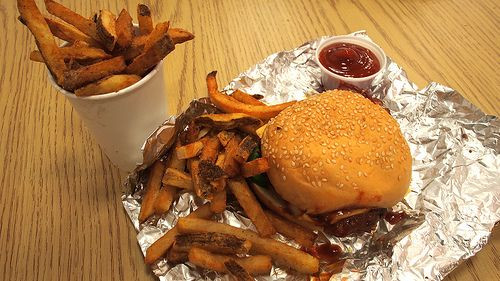Our Binge Eating And Obesity Problem: Scientists Use New Technique To Evaluate Our Desire To Eat

How does a researcher understand the true lure of particular foods? Unfortunately, when asked what they prefer to eat, too many experimental subjects are likely to pick the nutritionally correct answer instead of choosing the high-fat food item, such as a juicy cheeseburger or slice of cake, they genuinely prefer. To address this problem, scientists at the University of Cambridge have developed a unique, if understandably complex technique for evaluating obesity-related food behavior. A new video showing the details of their experimental design appears in JoVE, the Journal of Visualized Experiments.
According to Dr. Paul Fletcher, the principal investigator of the study, scientific approaches for investigating anti-obesity medicines generally rely on non-objective evaluations, such as having test subjects report their hunger and cravings. “When a person is asked how much they subjectively desire a food, they may feel pressured to give a 'correct' rather than a true answer," Fletcher said in the video. He added, "We present alternative ways of exploring attitudes to food by using indirect, objective measures — such as measuring the amount of energy exerted to obtain or view different foods, as well as determining brain responses during the anticipation and consumption of desirable foods."
Specifically, he and his colleagues devised a methodology that measures the hand-grip intensity (or grip force) of people participating in an experiment to calculate their motivation for food rewards.
Underlying Fletcher and his colleagues’ new grip force technique is their understanding that the value of a reward influences how much effort people are willing to expend to acquire it. Of course, when it comes to food, one of the crucial aspects of an item’s value is a person’s current state of hunger. Not being hungry naturally lessens the value of a food reward. However, being satisfied can also be sensory-specific — a food with different sensory properties, such as a sweet dessert, may still be desirable even when it follows a heavy if only savory meal. No longer hungry for the savory, we turn our attention to the sweet.
In countries and situations where a variety of foods are available, this phenomenon of sensory-specific satiety (as it is known) is part of what encourages over-eating.
In the video, then, the authors demonstrate how they can objectively study what drives people to over-eat. Their grip force task essentially assesses each participant's willingness to work or pay for food, while the researchers simultaneously track a participant’s brain activity using an MRI scanner. Under certain circumstances, then, the grip force task may “present a more accurate reflection of what they really want," Fletcher said. Because "there aren't many examples of grip-force tasks published in the literature, and there are no full and clear descriptions of how to design and set up the tasks" he and his team decided to publish a video showing other researchers how to use this new method. By using the technique presented in the JoVE video, the team hopes other researchers will be better able to determine the efficacy of new anti-obesity medicines.
Source: Ziauddeen H, Subramaniam N, Cambridge VC, Medic N, Farooqi IS, Fletcher PC. Studying Food Reward and Motivation in Humans. JoVE. 2014.
Published by Medicaldaily.com



























